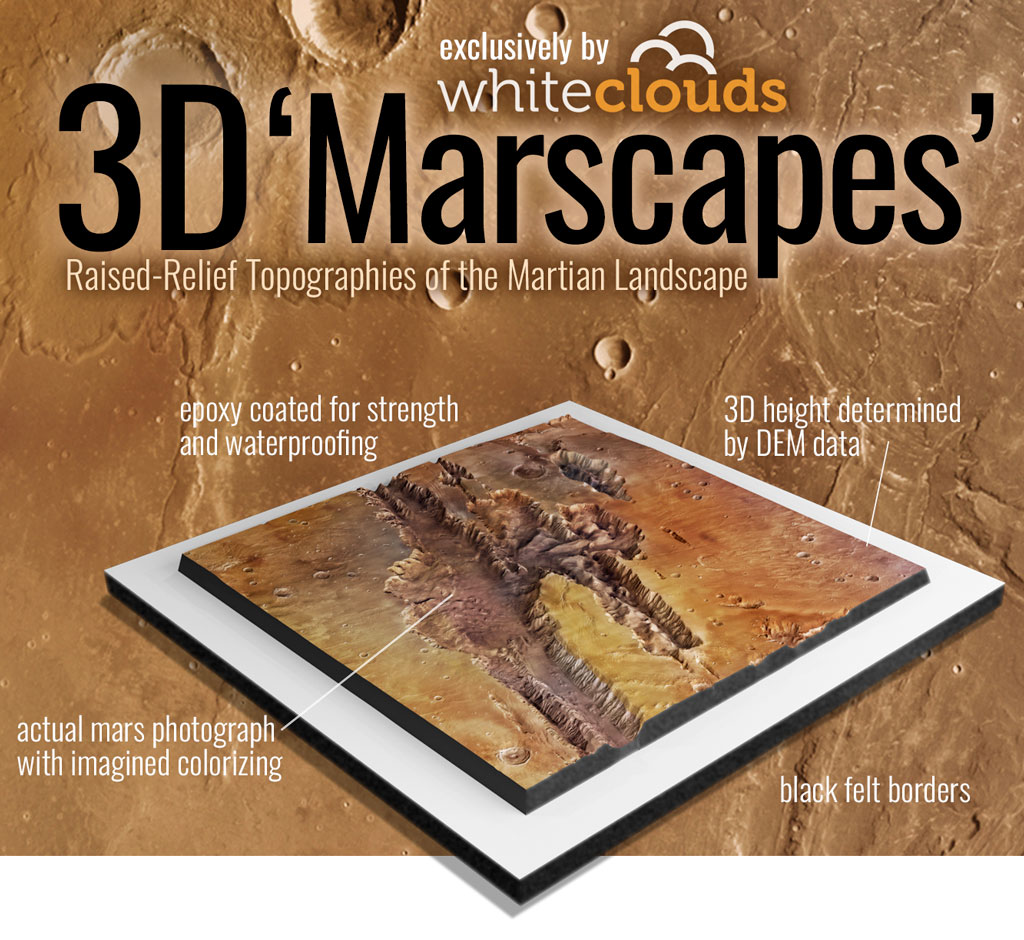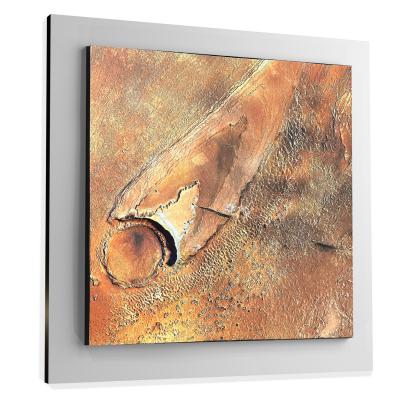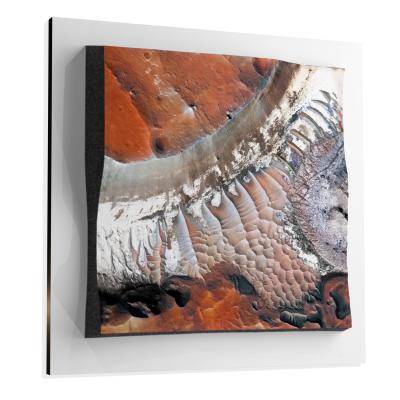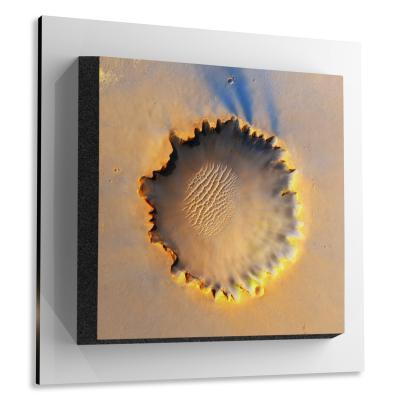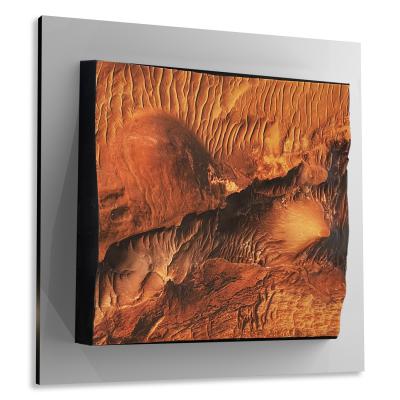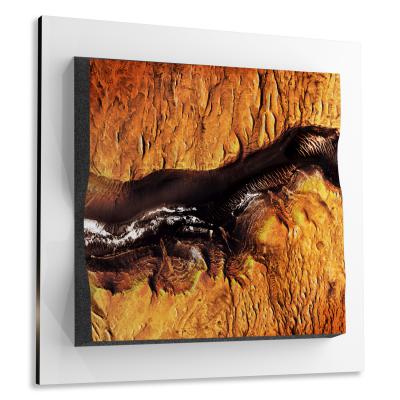Gale Crater
Gale Crater
We Build Custom 8K Mars Canvas Prints of Gale Crater
Did you know we make
custom
8K Mars Canvas Prints

and
3D Marscapes

Gale Crater
Gale Crater is one of the most studied and well-known features on Mars, serving as a unique window into the planet’s complex geological and climatic history. Named after Australian astronomer Walter F. Gale, this intriguing impact crater has garnered immense scientific interest for its diverse terrains and the clues it offers regarding Mars’ past, including its potential for supporting life.
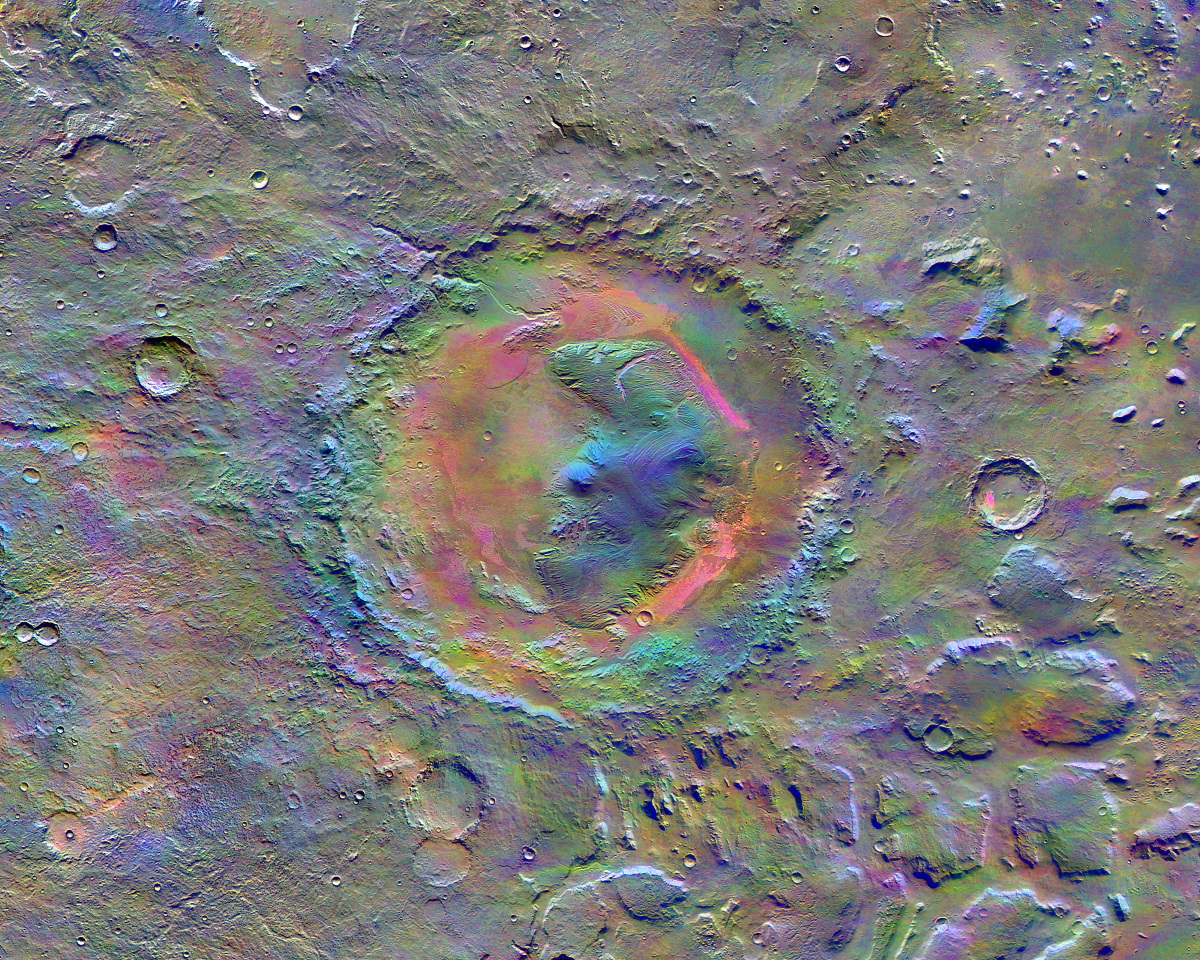 Mars-Odyssey-THEMIS-Gale-Crater-Minerals
Mars-Odyssey-THEMIS-Gale-Crater-Minerals
Geographical Location
Gale Crater holds a strategic position near Mars’ equator that makes it a geological treasure trove for scientists interested in the planet’s history. Specifically situated at coordinates around 5.4°S latitude and 137.8°E longitude, the crater boasts a commanding diameter of about 154 kilometers (approximately 96 miles). Its age is estimated to be within the range of 3.8 to 3.5 billion years, adding a temporal depth to its significance. Gale Crater is uniquely positioned between two contrasting Martian landscapes: the southern highlands, which are heavily cratered and suggest a turbulent geologic past, and the smoother northern lowlands that imply relatively calm geological processes. This spatial positioning gives Gale Crater an important role as a transition zone that encapsulates a diverse array of features. As such, it provides a condensed record that may shed light on the planet’s transformative journey over billions of years, from its violent infancy to its current state. This unique geographical backdrop makes the crater a crucible for the study of Martian geology, allowing for the comparison and contrast of features that exemplify both the ancient and more recent epochs of Martian history.
Advertisement
Sample Marscapes
Geological Composition
When it comes to geological complexity, Gale Crater is nothing short of a Martian marvel. Dominating its center is Aeolis Mons, colloquially known as Mount Sharp, which has an imposing elevation of about 5.5 kilometers (or around 18,000 feet). Mount Sharp is not just a simple mountain; its foundation is a complex layer cake of sedimentary materials laid down over billions of years. This stratification includes clay minerals, which are signatures of past water-rich environments, sulfates indicative of more acidic and possibly evaporative conditions, and a spectrum of basalts that reveal information about volcanic activity.
In addition to the layered grandeur of Mount Sharp, the crater floor itself is a geological masterpiece. It consists of a variegated tapestry that includes basaltic rocks, intricate alluvial fans formed by sediment deposition from flowing water, and expansive dune fields sculpted by aeolian processes. Not to be overlooked are the signs of fluvial and lacustrine sediments, which suggest that Gale Crater was once a hub of water activity. Spectroscopic analyses have added another layer of richness to our understanding, revealing a complex cocktail of minerals such as clays, sulfates, and hydrated salts. These minerals are indicative of various environmental conditions, underscoring the crater’s multifaceted geological history that encompasses both aqueous and varying climatic conditions.
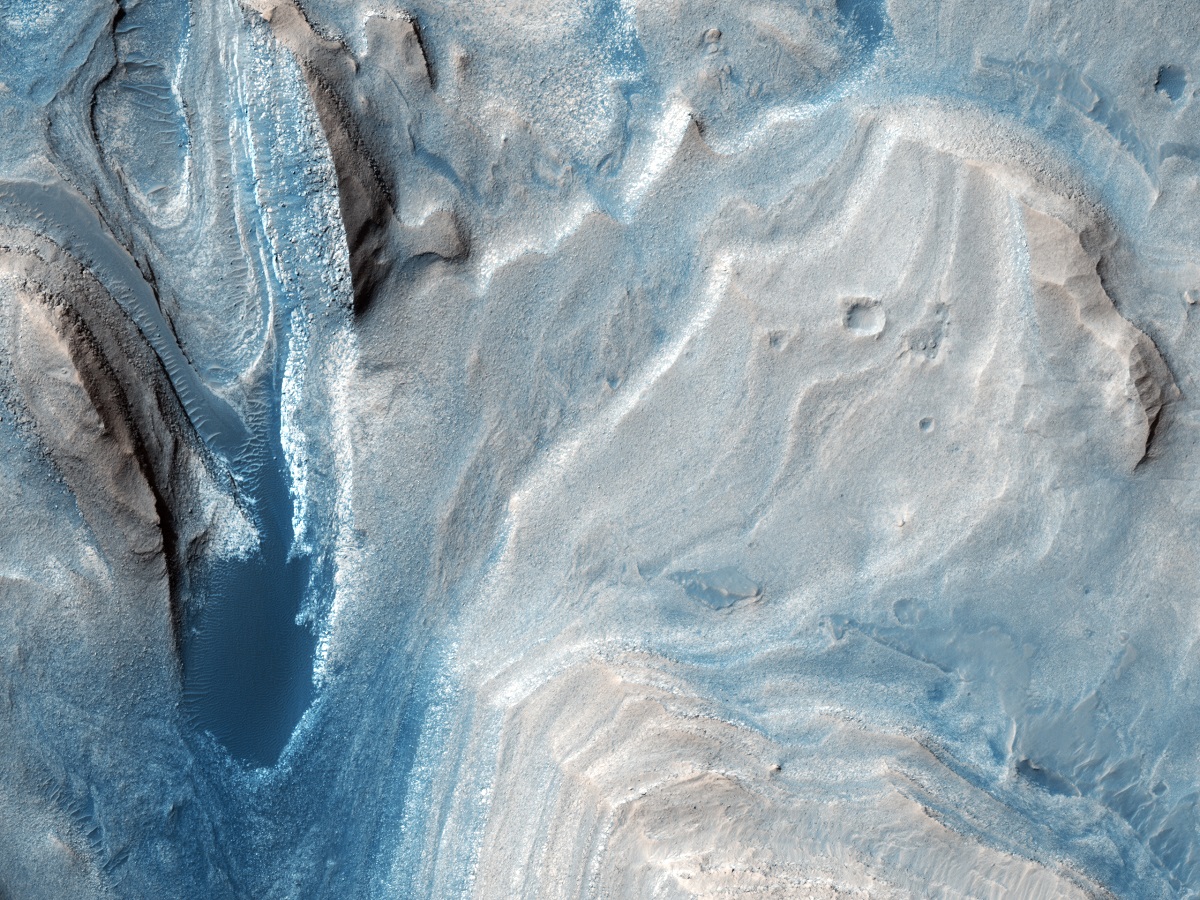 Inverted Riverbed in Gale Crater
Inverted Riverbed in Gale CraterSignificant Discoveries
Ancient Habitability
One of the most revolutionary discoveries in Gale Crater is the compelling evidence supporting the theory that ancient Mars was capable of harboring microbial life. This is not just speculative; it is grounded in the detection of organic molecules and complex chemistry found in rock samples within the crater. These molecules, along with other geochemical signs, paint a vivid picture of a Mars that was once, potentially, a living planet—or at least one that could have supported life at the microbial level.
Water-Cycle Evidence
Moreover, the crater offers up clues to a Martian environment that experienced periods of hydrological change. The layered sedimentary rocks within the crater contain tales of alternating environmental states, swinging from wet to arid conditions. This serves as evidence for fluctuating climates and water cycles on ancient Mars, and possibly episodic periods where liquid water was more abundant and stable on the surface.
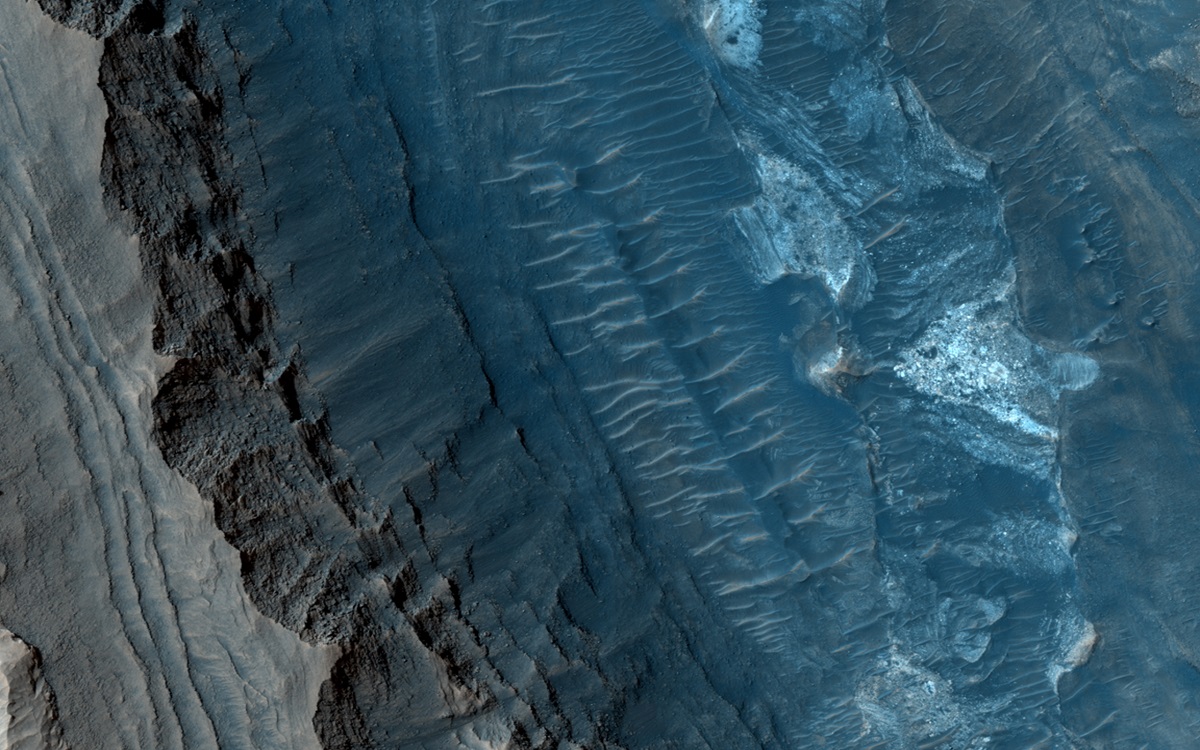 Chasm in Gale Crater’s Interior Mound
Chasm in Gale Crater’s Interior Mound
Scientific Missions
Gale Crater has been the beneficiary of extensive scientific attention, and various missions have aimed their instruments at this intriguing Martian feature. NASA’s Curiosity rover deserves a special mention. Launched in November 2011 and making its historic landing in Gale Crater in August 2012, Curiosity has been roving the crater’s surface, performing a variety of tasks such as drilling into rocks, carrying out detailed soil analyses, and capturing high-resolution imagery that has been instrumental in shaping our understanding of Martian geology. In addition to Curiosity, other orbiting missions like the Mars Reconnaissance Orbiter (MRO) and the European Space Agency’s Mars Express have also contributed invaluable data, providing a multi-faceted view of the crater from both ground and orbit.
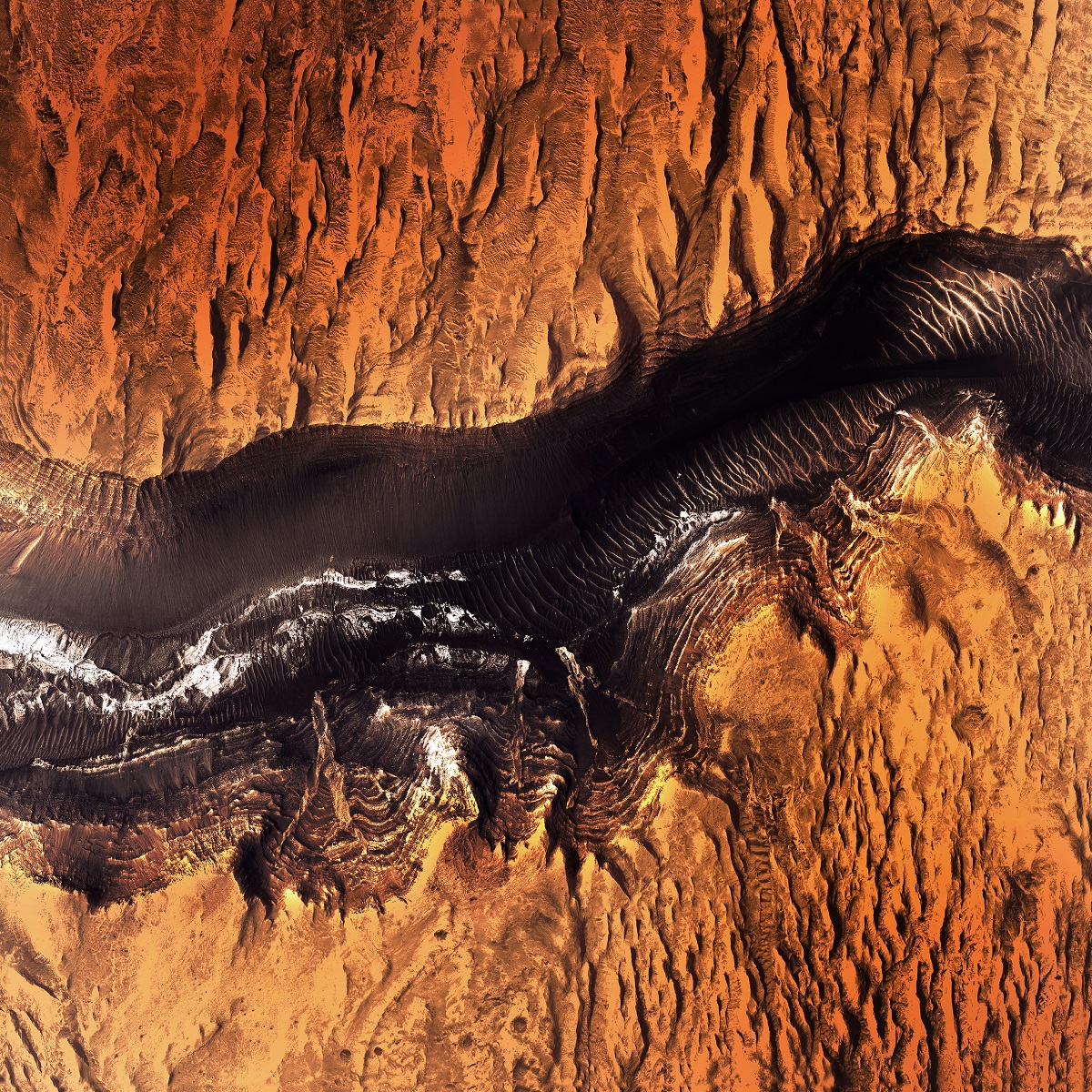 Gale Crater
Gale Crater
Geomorphological Features
The geomorphological layout of Gale Crater is a rich mosaic that serves as a time capsule of Martian history. At the forefront is Mount Sharp, with its multi-layered strata providing a chronological archive that documents eons of Martian geological and climatic shifts. But that’s not all; the crater also features geomorphic elements like alluvial fans, which are generally interpreted as the remnants of ancient rivers that once meandered into the crater. These alluvial features add to the mounting evidence that water was once an active geomorphic agent on Mars. Additionally, the crater walls exhibit signs of extensive erosional processes, possibly from a combination of wind and ancient water flows. Coupled with this are the sprawling dune fields that not only add topographical complexity but also offer key insights into the ongoing aeolian processes that are currently shaping Mars.
Gale Crater is a remarkable feature on the Martian landscape that offers a treasure trove of scientific opportunities. Its unique geographical location and diverse geological composition have made it a focal point for understanding Mars’ past, present, and potentially its future. From evidence of ancient habitability to insights into Martian geology and climate, Gale Crater continues to fascinate and challenge our understanding of the Red Planet.
Check out our 3D Mars Learning Center for more information on Mars and Gale Crater. You can also learn more at: NASA Mars Exploration.
More About Mars
Contact us today to learn more about our 3D services and how we can help you achieve your goals.
